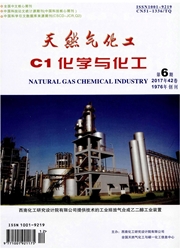

 中文摘要:
中文摘要:
通过盆栽试验研究了狗牙根和野古草对萘(Nap)和蒽(Ant)污染土壤的修复作用。结果表明,90 d后,狗牙根和野古草对污染土壤中Nap和Ant有明显的去除效果,狗牙根对萘和蒽的去除率分别为46.9%~74.6%、52.1%~77.6%,野古草对萘和蒽的去除率分别为51.8%~81.4%、47.6%~79.6%。植物去除土壤中萘和蒽的效率与生物量无明显关系。两种植物对萘和蒽的累积质量比随土壤中萘和蒽质量比增大而增大,且根部对萘和蒽的累积质量比高于茎叶。萘和蒽在两种植物中的生物浓缩系数(BCFs)随萘和蒽初始质量比增大而下降,在同等条件下,萘和蒽在野古草中的BCFs比在狗牙根中高,野古草对萘和蒽污染土壤的修复效果优于狗牙根。植物-微生物联合作用是降解土壤中萘或蒽的主要机制。
 英文摘要:
英文摘要:
The present paper is aimed at introducing its study of the respective remediation efficiency of Cynodon dactylon L. and Arundinella anomala in the Nap or Ant contaminated soil. It is necessary to investigate the effectiveness of plant remediation of PAHs-contaminated soils further, the removal of naphthalene (Nap) or anthracene (Ant) in the soil by Cynodon dactylon L. and explore the Arundinella anomala from the point of view of the greenhouse effect. The results of our simulated pot-growing exper- iment indicate that the two plants, Cynodon dactylon L. and Arundinella anomala, enjoy a great potential function in degrad- ing and removing Nap or Ant on the condition thai their concen- tration range should be controlled within the range from 5 mg/kg to 300 mg/kg in the soil for 90 days. On the other hand, the re- moval rates of Nap or Ant from the soil are respectively ranging from 46. 9% to 74. 6N' and can be expected to increase from the range from 52.1% to 77.6% as a result of 90 days removal. At the same time, the removal rates of Nap or Ant are hkely expec- ted to increase the said range from 51.8% to 81.4% by increas- ing Arundinella anomala and that from 47.6% to 79. 6%, re- spectively, though the phytoremediation efficiency of Nap and Ant in the soil remains little to do with the plant biomass. Therefore, with the increase of their initial concentrations, the accumulation concentrations of Nap or Ant in the tissue of the said plants can be expected to increase monotonically. In addition, the concentrations of Nap or Ant to be put to the roots prove always to be significantly higher than those to the shoots. Thus, the above investigation we have done also demonstrates that the bio-concentra- tion factors of Nap or Ant tends to decrease gradually with the increase of the concentrations. Under the same contamination rate, the bio-concentration factors of Nap or Ant in the Arundinella anomala tend to be higher than that in Cynodon dactylon L. , which indicates that ArtmdineUa anomala is more suitable
 同期刊论文项目
同期刊论文项目
 同项目期刊论文
同项目期刊论文
 Distribution and source apportionment of polycyclic aromatic hydrocarbons in soils and leaves from h
Distribution and source apportionment of polycyclic aromatic hydrocarbons in soils and leaves from h 期刊信息
期刊信息
